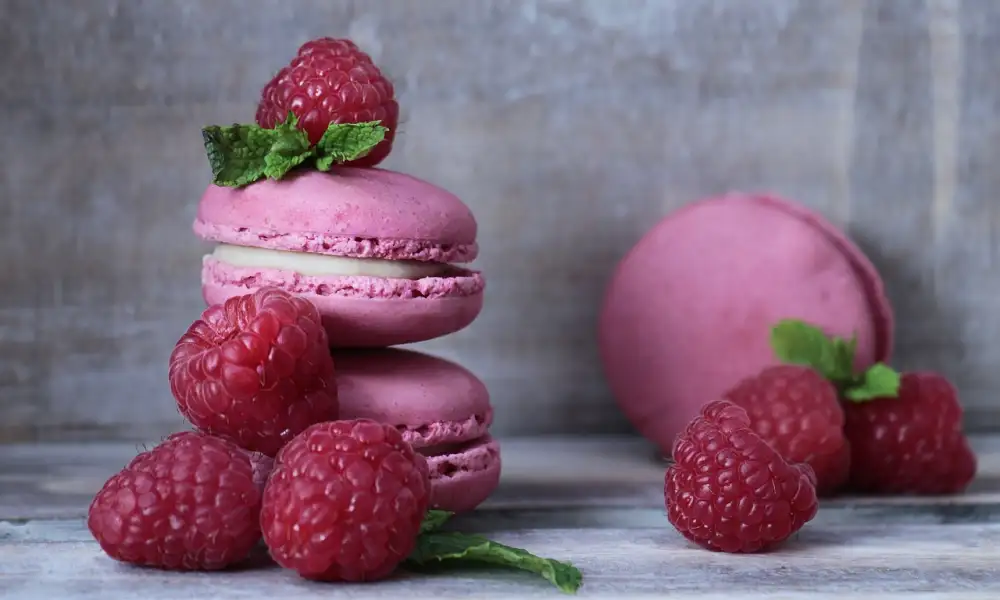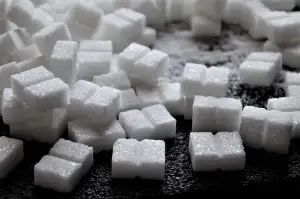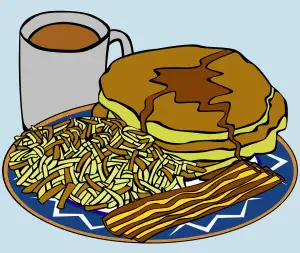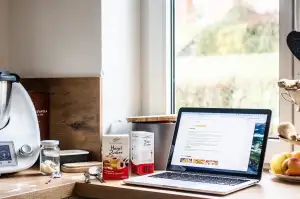Master the Art of Making Shortcrust Pastry: A Step-by-Step Guide to Creating the Perfect Flaky Delight

Shortcrust pastry is a versatile and delicious base for many sweet and savory dishes. It is known for its flaky texture and buttery flavor, making it the perfect choice for pies, tarts, quiches, and more. Mastering the art of making shortcrust pastry will elevate your culinary skills and allow you to create mouthwatering delights in your own kitchen. In this step-by-step guide, we will take you through the process of creating the perfect shortcrust pastry from scratch. So let's get started on this delightful journey!
Gathering the Ingredients
Before you embark on your journey to create the perfect shortcrust pastry, it's essential to gather all the necessary ingredients. The beauty of shortcrust pastry lies in its simplicity, as it requires just a few basic ingredients that are likely already in your pantry.
First and foremost, you will need plain flour. This is the foundation of your pastry and provides structure and texture. Make sure to use good quality flour for the best results.
Next, you'll need cold unsalted butter. Butter adds richness and flavor to the pastry while also contributing to its flakiness. It's important that the butter is cold because when it melts during baking, it creates steam pockets that result in a light and airy texture.
To bring everything together, you'll need a small amount of salt. Salt enhances the flavors in your pastry and helps balance out the sweetness of any fillings you may add later.
Lastly, you'll need ice-cold water. The key here is to keep everything as cold as possible throughout the process. Cold water helps prevent the butter from melting too quickly, which can lead to a tough dough.
By gathering these simple yet crucial ingredients, you're well on your way to mastering the art of making shortcrust pastry. So grab your apron and let's get started!
Mixing the Ingredients
Once you have gathered all the necessary ingredients, it's time to mix them together to create the perfect shortcrust pastry dough. Start by sifting the flour into a large mixing bowl to remove any lumps and aerate it. Add a pinch of salt for flavor and give it a gentle stir.
Next, add cold cubed butter to the bowl. Using your fingertips, rub the butter into the flour until it resembles coarse breadcrumbs. This technique helps distribute the fat evenly throughout the dough, resulting in a flaky texture.
Now, it's time to add liquid to bring the dough together. You can use water or a combination of water and beaten egg yolk for added richness. Gradually pour in the liquid while stirring with a fork or your fingertips until the mixture starts to clump together.
Be careful not to overmix at this stage as it can develop gluten and make the pastry tough. Once you see that most of the mixture has come together, stop mixing and gather it into a ball using your hands.
If there are still some dry crumbs left in the bowl, sprinkle a little more liquid and gently incorporate them into the dough. The key is to handle the dough as little as possible to avoid activating too much gluten.
The result should be a soft and slightly sticky dough that holds its shape when pressed together. If it feels too dry, add more liquid; if too wet, sprinkle some extra flour.
Remember that practice makes perfect when it comes to mixing shortcrust pastry ingredients. With experience, you'll learn how much liquid is needed for your desired consistency. So don't be discouraged if your first attempt isn't flawless – keep experimenting and refining your technique!
Forming the Pastry Dough
Once all the ingredients are mixed together, it's time to form the pastry dough. Start by gathering the mixture into a ball using your hands. Be careful not to overwork the dough as this can result in a tough pastry.
Next, lightly flour a clean surface and place the dough on top. Using a rolling pin, gently roll out the dough into a flat disc shape. Aim for an even thickness of about 1/4 inch.
If you find that the dough is sticking to the rolling pin or surface, sprinkle some more flour on top. However, be cautious not to add too much flour as this can make the pastry dry.
To ensure that your pastry bakes evenly, try to maintain a consistent thickness throughout. Pay attention to any thin spots and gently patch them up by pressing extra dough onto those areas.
Remember, shortcrust pastry should have a delicate and flaky texture, so handle it with care. Avoid stretching or pulling the dough as this can lead to shrinkage during baking.
Once you're satisfied with the shape and thickness of your pastry dough, it's time to move on to resting it before rolling it out further. This step allows gluten strands in the flour to relax and prevents shrinkage during baking.
Resting the Pastry Dough
Resting the Pastry Dough is an essential step in achieving the perfect flaky texture. After mixing the ingredients, it's important to wrap the dough in plastic wrap and refrigerate it for at least 30 minutes. This resting period allows the gluten to relax and prevents shrinkage during baking. Additionally, chilling the dough helps to firm up the fat, resulting in a more tender crust. So be patient and give your pastry dough some time to rest before moving on to the next step.
Rolling Out the Pastry
Once the pastry dough has rested, it's time to roll it out. Start by lightly dusting your work surface with flour to prevent sticking. Place the dough in the center and sprinkle a little more flour on top. Using a rolling pin, begin rolling from the center outwards, applying even pressure.
Keep rotating the dough as you roll to ensure an even thickness. Aim for a thickness of about 1/8 inch (3mm) for a delicate and flaky crust. If the dough starts to stick, sprinkle more flour underneath and on top.
Be gentle while rolling to avoid overworking the dough, which can result in a tough crust. Remember, shortcrust pastry should be tender and crumbly when baked.
Once you've achieved the desired thickness, carefully transfer the rolled-out pastry onto your prepared pie tin or baking dish. Gently press it into place, ensuring there are no air bubbles trapped underneath.
Trim any excess pastry hanging over the edges using a sharp knife or kitchen shears. You can use these trimmings to patch up any cracks or tears in the pastry shell.
Now that your pastry is rolled out and lined in the tin, it's ready for baking! But before we move on to that step, let's take a moment to discuss some tips and tricks for achieving perfect shortcrust pastry every time.
Lining the Pastry Tin
Once you have rolled out your pastry dough to the desired thickness, it's time to line your pastry tin. This step is crucial in ensuring that your shortcrust pastry bakes evenly and holds its shape.
First, carefully lift the rolled-out pastry sheet using a rolling pin and gently drape it over the tin. Gently press the pastry into the corners of the tin, making sure there are no air pockets.
Using a sharp knife or kitchen scissors, trim off any excess pastry hanging over the edges of the tin. Leave a slight overhang of about 1 centimeter as this will prevent shrinkage during baking.
To prevent the pastry from puffing up during baking, prick the base of the pastry all over with a fork. This will allow steam to escape and prevent any unsightly bubbles from forming.
If you're making a pie or tart that requires blind baking (pre-baking without filling), line the pastry with parchment paper or aluminum foil and fill it with baking beans or rice to weigh it down. This will help maintain its shape and prevent it from rising too much.
For pies or tarts that will be filled before baking, simply proceed with adding your desired filling directly onto the lined pastry shell.
Remember to always follow your recipe's instructions for lining specific types of tins or pans as different recipes may require variations in technique.
By taking care when lining your pastry tin, you'll ensure a beautiful and professional-looking final product that is ready for baking.
Baking the Pastry Shell
Once you have lined your pastry tin with the rolled-out dough, it's time to bake it to perfection. Preheat your oven to 180°C (350°F) and place the pastry shell in the center rack. It is important to blind bake the shell before adding any filling.
To blind bake, line the pastry shell with parchment paper or aluminum foil and fill it with baking beans or pie weights. This will prevent the pastry from rising and ensure an even bake. Bake for about 15 minutes until the edges turn golden brown.
After 15 minutes, remove the parchment paper or foil along with the baking beans. Return the pastry shell to the oven and bake for another 5-10 minutes until it is fully cooked and has a beautiful golden color.
Once baked, remove from the oven and allow it to cool completely before adding your desired filling. This will ensure that your shortcrust pastry remains crisp and flaky.
Remember, baking times may vary depending on your oven, so keep a close eye on your pastry shell while it bakes. With practice, you'll be able to achieve a perfectly baked shortcrust pastry shell every time!
Tips and Tricks for Perfect Shortcrust Pastry
1. Keep the ingredients cold: Cold butter and water are essential for achieving a flaky texture. Chill the butter before cutting it into small cubes, and use ice-cold water when mixing the dough.
2. Don't overmix: When combining the ingredients, mix just until the dough comes together. Overmixing can lead to a tough pastry.
3. Use a light touch: Handle the dough gently to avoid overworking it. This will help maintain its flakiness.
4. Resting is key: After forming the dough, let it rest in the refrigerator for at least 30 minutes. This allows the gluten to relax and prevents shrinkage during baking.
5. Roll with care: When rolling out the pastry, use gentle, even pressure to achieve an even thickness. Rotate the dough frequently to ensure it doesn't stick to the surface or rolling pin.
6. Line carefully: When lining your pastry tin, press the dough gently into the corners without stretching it too much. This will prevent shrinking during baking.
7. Blind bake for crispness: If your recipe calls for a pre-baked crust, blind bake it by covering it with parchment paper and filling it with pie weights or dried beans before baking. This helps maintain its shape and crispness.
8. Egg wash for golden color: For a beautiful golden color on your baked pastry shell, brush it lightly with beaten egg before baking.
Remember, practice makes perfect! With time and experience, you'll master the art of making shortcrust pastry and create delicious flaky delights every time you bake.
In conclusion, mastering the art of making shortcrust pastry is a skill that will elevate your baking game to new heights. With the right ingredients, proper mixing and resting techniques, and careful rolling and lining, you can create a perfect flaky delight every time. The satisfaction of enjoying homemade shortcrust pastry is unparalleled - from the buttery aroma that fills your kitchen to the crisp, golden crust that melts in your mouth. So why settle for store-bought when you can indulge in the joy of creating your own? Get ready to impress your friends and family with your culinary prowess as you serve up delectable pies, tarts, and quiches made with love and skill. Happy baking!
Published: 08. 12. 2023
Category: Food



